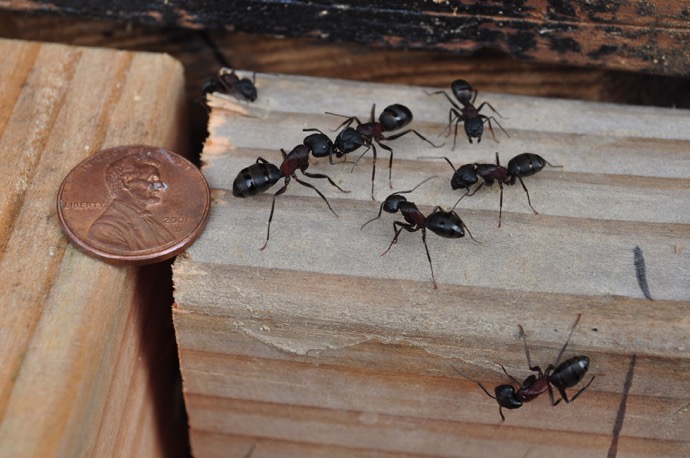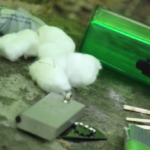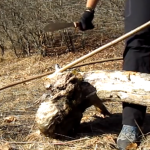Insects that Can Damage Wood Structures
You never want to let an insect infestation get out of hand if you notice that they are getting established in your home, shed, shelter or any other important wood structure. Not only can they cause the wood to rot prematurely, but letting an infestation go unattended can actually lead to serious damage to the structure, including collapse. Let’s take a look at some of the more common sources of problems as well as what you can do to bring the situation under control.
Carpenter Ants
Carpenter ants are black and can grow to almost ½ inch long. A female that has mated will have wings and fly into a suitable structure in order to lay eggs and establish a colony. While they don’t need wood to survive like other creatures, they often nest in damp, dark and moist areas along wall boards or where they connect to the foundation or ceiling. They can also establish colonies in foam insulation. Once the queen lays her eggs, worker bees will come and go, bringing in food and material to support the growing colony. Other workers will eat away at the wood and make tunnels to enlarge the colony as well. Left unattended, these can destroy the structural integrity of walls, floors and roofs over time.
Generally speaking, the best form of treatment involves a two step process. First, The perimeter of the structure is treated with a pesticide that worker ants will carry back into the colony. The second step is to place baits on the ground around the structure that worker bees will bring back in order to feed the ants. This two-pronged approach is the most effective, but it’s important to have access to the right material and address the problem promptly.
Powderpost Beetle

These beetles are the most destructive insects to wood next to termites, and some are easier to control than others. Some beetles attack hardwoods whereas others prefer soft woods that are found in moist, humid environments. Softwood infestations are easier to control, and both will require some attentiveness in order to identify problems and address the situation as it becomes apparent. These beetles bore little holes into the outer layers of wood planks and beams, and the result is a series of pockmarks that can become extensive that entire sections will need to be replaced.
The best way to deal with boring insects is to treat the wood with insecticide before coating it with laquer, stain or paint. The insecticide needs to penetrate through the wood fibers in order to be effective. Consequently, it is important to identify problem areas, replace affected wood as necessary and then treat the new pieces accordingly.
Termites

Termite colonies are highly-organized and big large nests below ground adjacent and beneath wood. They also bore wood out from the inside, which makes identifying problems difficult until extensive damage occurs. However, once the termites have exhausted their underground wood supply, they move above ground by creating special tubular and distinctive shelters and passageways. These generally are comprised of soil, small particles, feces and a cellulose-based mucous. They are generally visible along corners, posts or where floors meet walls near soil.
Most termite control solutions involve the use of pesticides as well as baits as a two-pronged approach to kill off colonies. Fortunately, there are many baits that are available to the general public, so it may be a good idea to stock up on some just in case. Removing the shelter tubes can help to disrupt colonies and slow the extent of damage, but keep in mind that wood beneath the surface may already be bored so severely that it could disintegrate. This is why it’s so important to conduct periodic inspections and keep on top of growing colonies before they turn into destructive infestations.
Be aware of whether or not these insects are a problem in your area or where your shelter is located. Make sure that you check for problems on a regular basis in order to take appropriate action as quickly as possible. The last thing that you need during a prolonged crisis is to have to make repairs or completely rebuild structures, and a little bit of prevention and attention can go a long way to prevent this from happening.















